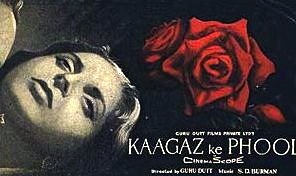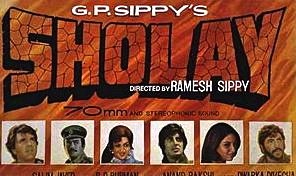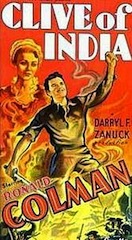
| |
Director: Richard Boleslawski, 1935
Ronald Colman stars as Robert Clive, a humble clerk in the East India Company, who is
frustrated by his lack of advancement and transfers to the military arm of the Company, where he
excels. Clive's leadership and gift for manipulation strengthened Britain's hold over India, allowed
him to amass great personal wealth and made him one of the first heroes of the British Empire.
© 20th Century Pictures
|
|
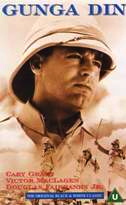
| |
Director: George Stevens, 1939
This classic film, starring Cary Grant and Douglas Fairbanks jr, was one of
the very first Hollywood depictions of India. Set in the nineteenth century,
three British soldiers and a native waterbearer must stop a secret revival of
the murderous "Thuggee" cult before it can spread across the land. The film is based
very loosely on Rudyard Kipling's 1892 ballad of the same name (though it is more like
The Three Musketeers) and is interesting for its stereotypes as much as for its story.
© RKO Pictures
|
|
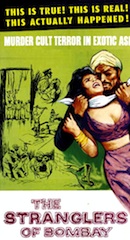
| |
Director: Terence Fisher, 1959
In the 1830s, the British East India Company does battle with the Thugs, a sinister cult of murderers who strangle their victims in devotion to the goddess Kali. This low-budget 1950s horror flick was produced by Hammer Films, a London studio known for pulp horror/sci-fi thrillers. It perpetuates all the usual orientalist stereotypes of Indians but is itself a revealing historical artifact. Based loosely—very loosely—on the writings of William Sleeman, the British army officer who helped eradicate the remnants of the Thuggee cult.
© Columbia Pictures
|
|
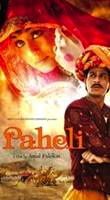
| |
Director: Amol Palekar, 2005
When an inattentive husband leaves behind his wife to go off on business, she is visited
by a ghost who takes the form of her husband and attempts to woo her back. The plot of this
typically lavish Bollywood film revolves around romance, magic, and fastasy. Scenes
of puppet theatre and camel races celebrate the culture of Rajasthan where
the story is set. Paheli is a screen version of the story "Duvidha" by Vijaydan
Detha, which was itself based on a popular Rajasthani folktale.
© Red Chillies Entertainment
|
|
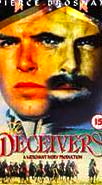
| |
Director: Nicholas Meyer, 1988
In 1825, Lt. William Savage, a reform-minded District Officer in the service of the East
India Company, undertakes to rid his district of what the British viewed as the two greatest
problems of Indian society: "Suttee" (widow immolation) and "Thuggee" (a secret cult of robbers
and murderers). Savage's actions are eventually thwarted by his profit-minded Company superiors,
but not before he attempts to infiltrate the cult and become one of the "deceivers." Based
on the 1952 novel by John Masters. © Warner Home Video
|
|
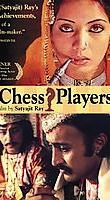
| |
Director: Satyajit Ray, 1977
In 1856, officials of the East India Company move to consolidate their
hold over North India by annexing the wealthy kingdom of Awadh. The chief minister to
the Nawab attempts to warn his ruler and local landlords of the impending danger
but they ignore him and instead indulge their obsession with playing chess.
The game becomes a metaphor for the larger game of politics played by the British as they
maneuver to capture Awadh's king. Based on the 1924 short story by Premchand.
© Shemaroo
|
|
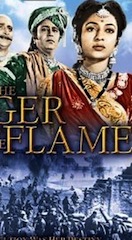
| |
Director: Sohrab Modi, 1952
This epic film tells the true story of Rani Lakshmi Bai, ruler of the small princely
state of Jhansi in central India. The Rani of Jhansi struggled to save her
state from British annexation and died in 1857 while personally leading her
soldiers into battle. Her heroism, leadership, and sacrifice have been celebrated
in folklore and repeatedly invoked by Indian nationalists. This was the first
Indian film in Technicolor and one of the first to enjoy distribution in the US
under the title The Tiger and the Flame.
© Geneon
|
|
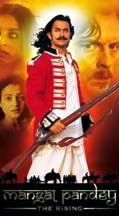
| |
Director: Ketan Mehta, 2005
This Bollywood epic is the first major film to focus on the 1857 Indian Rebellion—or
"Mutiny" as it is usually referred to in British history. The story follows the rebel
leader Mangal Pandey, an Indian sepoy in the service of the East India Company, and his
friendship with a British officer. Pandey was a real figure but one about whom little is
known. Filming began in 2003 and the opening scene was launched by Charles, Prince of Wales,
during an official royal visit to India.
© Yash Raj Films
|
|
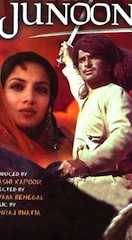
| |
Director: Shyam Benegal, 1979
Set during the Uprising of 1857, this film focuses on three women of an Anglo-Indian
family who take refuge from the rebels with a local moneylender to whom they have a
substantial debt and who, thus, has a vested interest in their survival. When they
are discovered, their lives are spared as the rebel leader, Javed, wishes to make the
youngest woman, Ruth, his second wife. The plot is further complicated when British
forces return seeking vengeance for the mutiny.
© Shemaroo
|
|
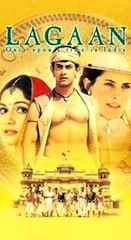
| |
Director: Ashutosh Gowariker, 2001
In 1893, the people of a small village in colonial India hope that they
will be excused from paying lagaan, the crippling land tax that
the British have imposed. Instead, the capricious officer in charge
challenges them to a game of cricket, a game totally unknown to
them. If they win, they get their wish; if they lose, the increased
tax burden will destroy their lives.
© Columbia/TriStar
|
|
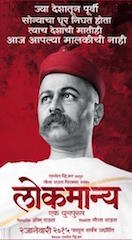
| |
Director: Om Raut, 2015
A Marathi biopic of the fiery nationalist Bal Gangadhar Tilak, lionized as Lokmanya ("revered by the people"), who advocated for a confrontational approach to ridding India of its British rulers. Tilak's embrace of Indian culture and rejection of English education made him popular among the Marathi-speaking peasantry of Western India and his writings and speeches gained him a national following while leading to his imprisonment on charges of sedition. Tilak died in 1920, the year that Gandhi's first Non-Cooperation campaign began.
© Essel Vision
|
|
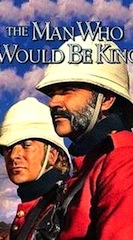
| |
Director: John Huston, 1975
This adaptation of the famous 1888 novella by Rudyard Kipling tells
the story of Daniel Dravot and Peachy Carnehan, two ex-soldiers
roaming through British India. They decide that the country is too
small for them, so they trek beyond the Northwest frontier to "Kafiristan"
in order to become kings in their own right. Kipling appears briefly
as a character in his own fictional tale.
© Warner Home Video
|
|
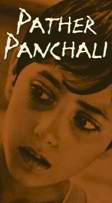
| |
Director: Satyajit Ray, 1955
This acclaimed film tells the story of an impoverished Brahman family
in Bengal at the beginning of the twentieth century. Harihar recites religious
texts and performs Hindu rituals while dreaming of a career as a playwright.
Meanwhile he and his family cope with the daily hardships of village life.
Based on the 1929 novel by Bibhutibhushan Bandyopadhyay with music by Ravi Shankar.
This is the first film in Ray's Apu Trilogy. The other films are
Aparajito (Unvanquished)
and Apu Sansar (The
World of Apu).
© Columbia/TriStar
|
|
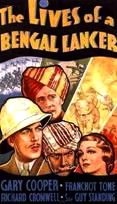
| |
Director: Henry Hathaway, 1935
The 41st Bengal Lancers are stationed on the Northwest Frontier of British India, guarding
against Afghan invaders led by the wily Oxford-educated Mohammed Khan. Experienced, though
insubordinate, Lt. McGregor (Gary Cooper) is joined by two younger officers through various
adventures and hardships. This film is a noteworthy period piece from the 1930s but is less
well known than Gunga Din, which was released a few years
later and has become a cinema classic.
© Universal
|
|
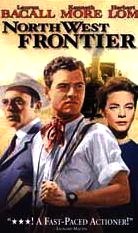
| |
Director: J. Lee Thompson, 1959
This film takes place in 1905 in the Northwest mountain regions of India where a local Hindu raja
allied to the British is battling rebel Muslim tribesmen. In order to get his son—the crown
prince—and his governess to safety the raja entrusts them to the care of a British officer.
The film is a typical Saturday morning cliffhanger, but the direction is quite good.
© RCI Home Video
|
|

| |
Director: Victor Saville, 1950
This adaptation of Rudyard Kipling's famous adventure novel from 1901 recreates
the "Great Game" of spying and surveying in British India's Northwest frontier.
The title character is a young British orphan who, like an Anglo-Indian Huck Finn,
roams the bazaars and roads of his adoptive country surviving through theft,
begging, and being a messenger and spy for the British.
© Warner Home Video
|
|
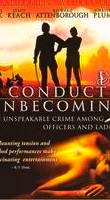
| |
Director: Michael Anderson, 1975
The plot revolves arounds a scandal in a British regiment stationed in India in the 1870s.
Lt. Drake is from a middle-class background and is eager to advance himself by making the
right impression. Lt. Millington, the son of a general, is not keen on army life and desires
to get out as soon as he possibly can. When the widow of the regiment's most honored hero
is assaulted, Drake must defend Millington from the charges in an unusual court-martial.
Based on the 1969 play by Barry England.
© Crown Films
|
|
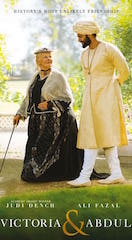
| |
Director: Stephen Frears, 2017
In 1887, Abdul Karim, a young police clerk from Agra, is selected by the British colonial goverment to travel to London to present a gift to Queen Victoria on the occasion of her Golden Jubilee. Abdul strikes up an unlikely friendship with the "Empress of India" and stays on in Britain to become her servant and, at her request, her munshi (teacher) of Urdu and the Qur'an. When Victoria dies in 1901, Abdul returns to India. Based on the book by Shrabani Basu and Abdul's diary discovered in 2010.
© BBC Films
|
|
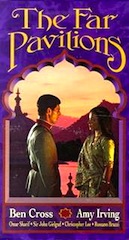
| |
Director: Peter Duffell, 1984
Based on the bestselling 1978 novel by M.M. Kaye, this miniseries is an epic of high
adventure in colonial India revolving around the romance between Anjuli, a half-caste
Indian princess, and Ash, a British officer raised in India. The Far Pavilions
drew upon and helped perpetuate a popular sense of "Raj nostalgia" in the early 1980s.
As such, it offers a lavish, entertaining, but highly romanticized vision of exotic
India under British rule.
© Acorn Media
|
|
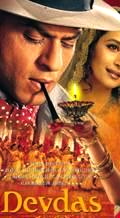
| |
Director: Sanjay Leela Bhansali, 2002
This visually stunning film tells the story of Devdas, the son of a
zamindar (landlord). He is parted from his childhood friend and true
love, Parvati, when he is sent to England for his education.
Parvati eagerly awaits his return, but their love is not meant
to be. At the time it was made, Devdas was the most costly
Hindi commercial film on record. Based on the 1901 novel by Sarat
Chandra Chatterjee.
© Qualiton Imports Ltd.
|
|
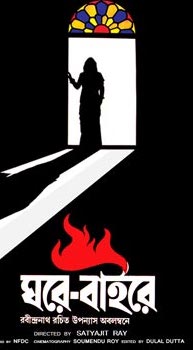
| |
Director: Satyajit Ray, 1984
In 1907, Nikhil—a wealthy yet enlightened and charitable Bengali landowner—encourages
his wife Bimala to emerge from the traditional female seclusion of purdah and introduces
her to his old friend Sandip, a radical leader in the Swadeshi movement. Bimala is
deeply affected by Sandip's revolutionary fervor and experiences a profound political
awakening that draws her out of her home and into the tumultuous world of Indian nationalism. Based
on the 1916 novel by Rabindranath Tagore.
© Columbia/TriStar
|
|
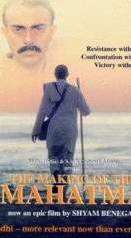
| |
Director: Shyam Benegal, 1996
The plot of this jointly produced Indian and South African film concentrates on Mohandas
Gandhi's early years in South Africa, and the crucial events there that led to his later
fame in India as "Mahatma". Close attention is given to the slow and complex development
of Gandhi's political philosophy and his deep, but at times difficult, relationship with his
wife Kasturbai. Based on the 1970 book The Apprenticeship of a Mahatma
by Fatima Meer.
© Video Sound
|
|
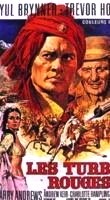
| |
Director: Ken Annakin, 1967
Set in the 1920s, this film is based very loosely on the true exploits
of the notorious Bhanta dacoit, Sultana, and the colonial police officer,
Freddy Young, whose mission it was to capture him. Sultana (Yul Brynner)
and Young (Trevor Howard) develop a strong respect for each other during
their game of evasion and pursuit across the hills and plains of North
India. However, the portrayal of Sultana as a nationalist rebel and Young as ambivalent
toward British imperialism in India is historically inaccurate. © Rank Organisation
|
|
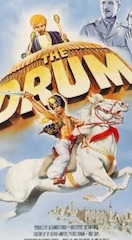
| |
Zoltan Korda, 1938
Set in the Northwest Frontier, the plot revolves around an uprising against the British and their Indian allies. The film offers a gallery of imperial stereotypes: the gallant English officer and his devoted wife, the plucky Scottish drummer, the treacherous Indian rebel, and the obsequious loyal prince. Though popular with British audiences, The Drum caused protests in Madras and Bombay, where it was viewed—not unreasonably—as pro-British propaganda. Some filming was done in the princely state of Chitral, now the province of Khyber-Pakthunkhwa, Pakistan.
© United Artists
|
|
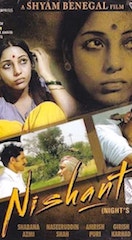
| |
Director: Shyam Benegal, 1975
Set in the 1920s, this film revolves around the family of a powerful zamindar (rural landlord) who will not hesitate to do anything for the advancement of his family including bending the law to his own advantage. A disturbing portrait of the power of the rural elite and the sexual exploitation of women during the feudalism that existed in colonial India. This acclaimed art film received India's National Film Award for best feature film in Hindi and was nominated for the prestigious Palme d'Or. Written by the legendary Marathi playwright Vijay Tendulkar.
© Eagle Home Entertainment
|
|

| |
Director: Richard Attenborough, 1982
This epic film portrays the life of Mohandas K. Gandhi from his days
as a young lawyer in South Africa to his death as the spiritual
leader of the Indian nation shortly after independence. It also
provides a vivid account of the Indian nationalist movement from
its beginnings through the independence and partition of the Indian
subcontinent. This critically acclaimed film took decades to produce and won eight Academy Awards in 1983.
© Columbia/TriStar
|
|
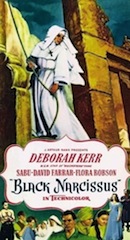
| |
Directors: Michael Powell and Emeric Pressburger, 1947
This strange and haunting film focuses on a group of Anglican nuns who arrive in a remote location in the Himalayas to set up a school and clinic for the local residents. The fragmentation and collapse of their own community force them to abandon the mission. The film was released a few months before India's independence and some critics speculate that the plot is an allegory about Britain's retreat from India. Based on the 1939 novel by Margaret Rumer Godden.
© Criterion
|
|
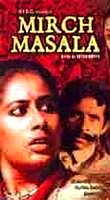
| |
Director: Ketan Mehta, 1985
Set in central India in the early twentieth century, this film depicts
the daily humiliation and exploitation heaped upon villagers by an
abusive subedar (tax collector). In colonial India, subedars went from
village to village accompanied by police constables, often demanding more than just taxes.
When this subedar's attention focuses on the local women, they unite and
fight back, to the shame of their feeble husbands.
© Channel Four Films
|
|
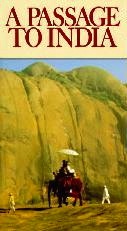
| |
Director: David Lean, 1984
Tensions between Indians and the colonial British residents of the town of Chandrapore boil over
when a visiting Englishwoman, Adela Quested, accuses a young Indian physician, Dr. Aziz, of rape
during a tour of the local caverns. Based on E.M. Forster's 1924 novel, this film can be seen as
a study of colonial relations, perceived differences between East and West, and the nature of memory
and friendship.
© Columbia/TriStar
|
|
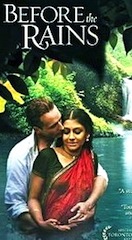
| |
Director: Santosh Sivan, 2007
Set in 1937 in the Malabar District of the Madras Presidency, this film focuses on an affair between an English spice plantation owner and his Indian housekeeper that ends tragically. The central character is T.K., a servant on the plantation, who discovers the affair and is torn by loyalty to his employer, village politics, and the rising tide of Indian nationalism. Among other things, the film captures well the beauty of the Indian state of Kerala in which it was filmed.
© Lions Gate
|
|
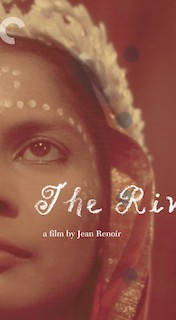
| |
Director: Jean Renoir, 1951
This coming of age story revolves around Harriet, the daughter of an English jute mill owner, who lives in a house on the banks of the Ganges. Harriet's family life and friendships immerse her in a world that blends Indian and western culture. Based on the 1946 novel by Margaret Rumer Godden, The River was the first Technicolor film made in India. Martin Scorsese saw this film as a child and it had a profound effect on his later development as a filmmaker. Wes Anderson also cites The River as a major influence on his 2007 film The Darjeeling Limited.
© Criterion
|
|
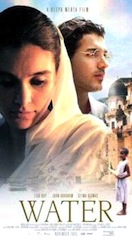
| |
Director: Deepa Mehta, 2005
Set in the 1930s during the rise of the independence struggle against British colonial
rule, this film examines the plight of a group of widows forced into poverty at a temple
in the holy city of Varanasi. It focuses on the relationship between one of the women,
who wants to escape the social restrictions imposed on widows, and a low caste man who is a
follower of Mahatma Gandhi. Water was completed despite years of aggressive efforts
by Hindu extremists to halt its filming.
© Mongrel Media
|
|
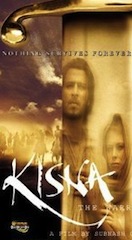
| |
Director: Subhash Ghai, 2005
This Bollywood epic recreates the turmoil of the last days of the British Raj while
focusing on the romance between Kisna, a young Indian of humble origins, and Katherine,
his English childhood friend and daughter of a hated colonial official. Like mostly
Bollywood films, Kisna is filmed on beautiful locations and filled with lavish visual
effects and elaborate musical routines, but it also signals a trend in Bollywood to
tackle topics of greater historical and political significance.
© Eros Entertainment
|
|
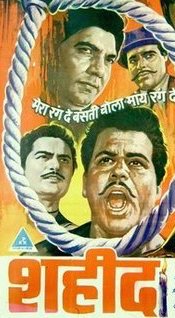
| |
Director: S. Ram Sharma, 1965
This classic of Indian cinema portrays the controversial life
and death of Bhagat Singh, the Punjabi revolutionary who took up arms
against colonial rule in India. Condemned by the British as a terrorist
and hailed by many Indians as a freedom fighter, Bhagat Singh was
initially inspired by the Gandhian example of non-violent non-cooperation
but later rejected it after growing frustrated at its apparent ineffectiveness.
© Digital Entertainment
|
|
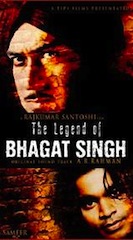
| |
Director: Raj Kumar Santoshi, 2002
This 2002 film retells the inspiring tale of Bhagat Singh made famous in
Shaheed
(1965). In the late 1920s, the revolutionaries of the Hindustan Socialist Republican
Army carried out a campaign of bombings and assassinations in Punjab to force the British
out of India. In 1931, Bhagat Singh and two companions were sentenced to death and hanged
in Lahore and, in the process, became martyrs for the Indian nation.
© Tips Films Pvt. Ltd.
|
|
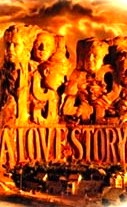
| |
Director: Vidhu Vinod Chopra, 1994
This commercial Hindi film tells the story of the romance between
Naren, the son of wealthy landowner, and Rajjo, the daughter of a revolutionary.
The story is set in small town in the foothills of the Himalayas caught up the
turmoil of the Second World War and the "Quit India" Movement. The film is an epic of
love and sacrifice not unlike Gone with the Wind as well a contemporary example of how India's
struggle for independence is presented to Indian moveigoers.
© Eros Entertainment
|
|
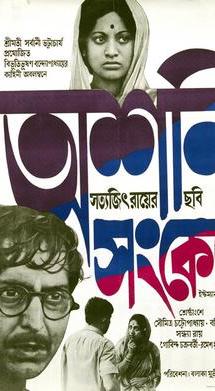
| |
Director: Satyajit Ray, 1973
Set in a village in Bengal during World War II, this film examines the effect of the
Great Famine of 1943 through the eyes of a local Brahmin doctor-teacher and his wife.
The plot unfolds at a leisurely pace, reflecting the rhythms of village life, but gradually
shows the breakdown of traditional village norms under the pressure of hunger and
starvation that would claim over three million lives, one of the worst disasters in
20th-century India. Based on the 1959 novel by Bibhutibhushan Bandopadhyay.
© Eagle Home Entertainment
|
|
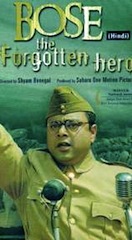
| |
Director: Shyam Benegal, 2005
This film focuses on the final years in the life of Subhas Chandra Bose, one of
the most controversial figures in Indian nationalism. A rising star in the freedom
movement, Bose fell out with Gandhi and was pushed to the margins of Congress politics.
At the outbreak of war in 1939, he fled to Germany and later conspired with Japanese
forces to lead an army of Indian soldiers against the British during the Burma campaign.
Bose remains a hero to many Indians, especially in his native Bengal.
© Sahara Media
|
|
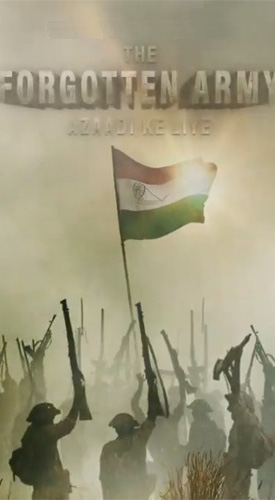
| |
Director: Kabir Khan, 2020
This limited series tells the story of the Azad Hind Fauj, the Indian National Army, formed
from Indian Army prisoners and civilians after the fall of Singapore to the Japanese in early
1942. Led by the Bengali nationalist Subhas Chandra Bose, the men and women of the INA fought
alongside Japanese forces in Burma in 1944-45. After World War II, the captured INA officers
were tried for treason, but their example inspired Indian nationalists and accelerated the end
of British rule in India. © Amazon
|
|
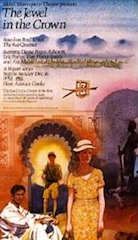
| |
Director: Christopher Morahan, 1984
This fourteen-part miniseries originally produced for Granada
Television in Britain tells the story of a small group of Britons
and Indians from the middle of the Second World War to the independence
of India and Pakistan in 1947. The historical authenticity of the plot
and complex characters provide an excellent glimpse into the psyche
of the British in India during the final days of the "Raj." Based on
Paul Scott's Raj Quartet novels published between 1965 and 1975.
© A&E Home Entertainment
|
|
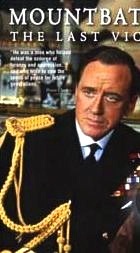
| |
Director: Tom Clegg, 1986
This TV miniseries traces
the events and experiences of the last viceroy of India, Lord Louis
Mountbatten, and his wife Lady Edwina. In early 1947, Mountbatten arrived in India
to oversee the transfer of power to independent India and Pakistan.
The film captures well the challenges, dilemmas, and tragedies
involved in the British withdrawal and the partition of the Indian subcontinent.
© Bonneville Video
|
|
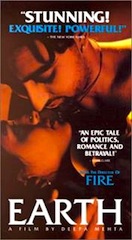
| |
Director: Deepa Mehta, 1998
The movie opens in the city of Lahore in Punjab in 1947 before India and
Pakistan became independent. Lahore is a cosmopolitan city, depicted
by a group of working class friends from different religions. The
rest of the movie chronicles the fate of this group and the maddening
religious conflict that sweeps across Punjab as the partition of
the two countries is decided and Lahore is given to Pakistan. Based on the 1988
semi-autobiographical novel The Ice Candy Man by Bapsi Sidhwa. © New Yorker Films
|
|
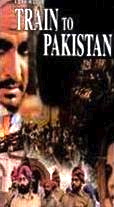
| |
Director: Pamela Rooks, 1998
Tensions run high in a Punjab village in the run-up to partition between independent
India and Pakistan. Sikhs living in this border town have heard rumors of Muslims
assaulting, killing, and raping other Sikhs and Hindus—many of whom are their
friends and relatives. Enraged at the breakdown of civil order and eager for
revenge, they plan their own attack upon a crowded train full of Muslims headed
to Pakistan. Based on the 1956 novel by Khushwant Singh.
© Video Sound
|
|
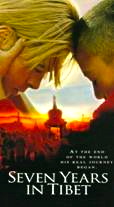
| |
Director: Jean-Jacques Annaud, 1997
Based loosely on the 1952 memoir by Austrian mountaineer Heinrich Harrer, this film
begins in 1939 prior to his departure for an expedition in India. At the outbreak
of war Harrer was detained by British authorities and in 1944 escaped from a POW camp in Dehra
Dun and fled into neighboring, neutral Tibet. He remained there until 1951 and during that
time befriended the young Dalai Lama. Harrer left Tibet shortly after the Chinese invasion.
A solid film with spectacular cinematography. © Columbia/TriStar
|
|
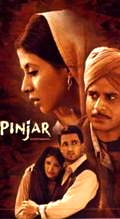
| |
Director: Chandra Prakash Dwivedi, 2003
Lajjo is a recently married Hindu woman abducted by Muslims during the chaos
of partition and taken to Pakistan. There she is forced to become the second
wife of an abusive and controlling alcoholic. Her determined sister-in-law,
Puro, sets out to search for her, encouraged by her brother, but cautioned
by her parents who would prefer not to lose another child. A compelling
story that deals with abduction, a widespread and largely overlooked aspect
of partition violence.
© Lucky Star Entertainment
|
|
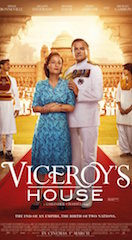
| |
Director: Director: Gurinder Chadha, 2017
The transfer of power and partition of India and Pakistan told largely through the
experiences of the house staff at the stately New Delhi residence of the viceroy
following the arrival of Lord and Lady Mountbatten in early 1947. As the clock ticks
down to independence, the servants prepare for an uncertain future for themselves and
their families. This film was lambasted by historians for the unsupported premise that
partition was conceived as a conspiracy by Churchill's wartime government to contain
postwar Soviet expansion into the oil-rich Middle East. © Pathé
|
|
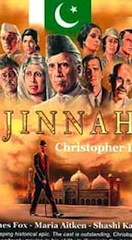
| |
Director: Jamil Dehlavi, 1998
Muhammad Ali Jinnah being judged in the afterlife is the premise of this
controversial film about the founder of Pakistan. The story traces Jinnah's political
development from champion of Hindu-Muslim unity to his demand for a separate Muslim state.
The film was meant to revise the largely unflattering portrayal of Jinnah presented
in earlier films such as Sir David Attenborough's Gandhi.
Yet the casting of an Englishman (veteran English actor Sir Christopher Lee) in the
title role was criticized by some Pakistanis.
© Dehlavi Films
|
|
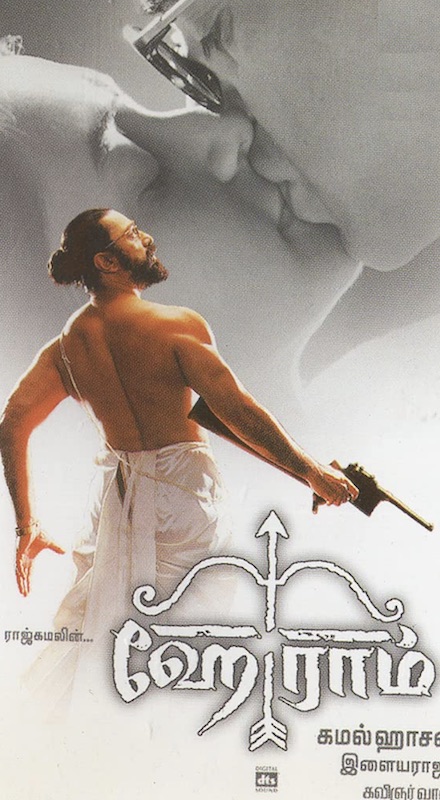
| |
Director: Kamal Hasan, 2000
This film traces the descent of an Indian archaeologist from moderate
politics into Hindu fundatmentalism after the murder of his wife in the
Calcutta riots of 1946. Although produced as a commercial Hindi film,
it boldly addresses the communal violence that accompanied the partition
of the subcontinent and the reaction of the Hindu right to Gandhi's pleas
for communal harmony. Some "disturbing" portions were cut by the Indian film
censor board.
© Blue Mountain Digital
|
|
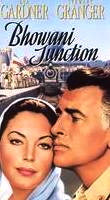
| |
Director: George Cukor, 1956
In the summer of 1947 the British are on the verge of finally leaving India.
Among the few sorry to see them leave are the Anglo-Indians—half British and
half Indian. They are going to miss the patronage of their white cousins, the
job reservations, and the important status and positions they currently hold.
This film revolves around Victoria, an Anglo-Indian woman and her relationships
with British, Indian, and Anglo-Indian men. Based on the 1954 novel by John Masters.
© MGM
|
|
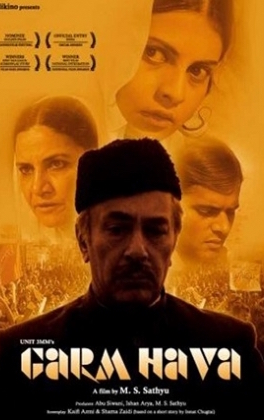
| |
Director: M.S. Sathyu, 1974
In the grim months after the assassination of Mahatma Gandhi in 1948, Salim Mirza, an Agra businessman and patriarch of a large Muslim family, confronts the dilemma of whether to move to Pakistan, as have many of his relatives, or remain in India. This film details the slow disintegration of Salim's family and is one of the most poignant films made about India's partition. Garam Hawa was, in its time, a more serious film than most Bollywood fare and is often credited with helping inspire a new wave of art cinema in India.
© IndiKino Edutainment
|
|
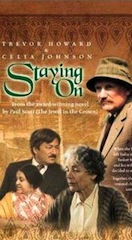
| |
Director: Silvio Narizzano, 1979
Based on Paul Scott's Booker Prize-winning novel from 1977, this film tells the story of
retired colonel Tusker Smalley and his wife Lucy who made the decision to "stay on"
in India after the British withdrew in 1947 and as most of their friends returned home.
Now retired, Tusker and Lucy are the only remaining British residents in a once-busy
hill station. Problems arise when the Indian owner of their bungalow plans to change
the one corner of India in which they hoped to preserve their Anglo-Indian life.
© HBO Films
|
|

| |
Directors: Ismail Merchant and Madhur Jaffrey, 1999
In 1954, seven years after India has gained independence from Britain, many Indians
still feel like second-class citizens in their own country, as the nation's sovereignty
has not immediately erased the perception that the British are superior to Indians. An
example is Cotton Mary, an Anglo-Indian nurse in the employment of the wife of a BBC
correspondent. Mary claims she is the daughter of a British army officer (although she
has no firm evidence) and views herself as more British than Indian.
© Universal
|
|
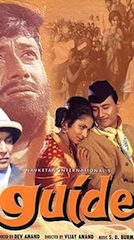
| |
Director: Vijay Anand, 1965
Formerly India's most corrupt tour guide, Raju—just released from prison—seeks refuge
in an abandoned temple. Mistaken for a holy man by the local community, he plays the part
and succeeds so well that God himself intervenes to put the con man's newfound sanctity
to the test. A classic film adaptation of R.K. Narayan’s most celebrated novel,
first published in 1958.
© Eros Entertainment
|
|
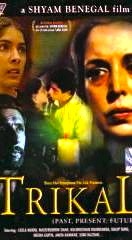
| |
Director: Shyam Benegal, 1985
Set in the Portuguese enclave of Goa in 1961, this film follows the lives of several generations
within a wealthy and influential Goan family. The Portuguese-speaking, Roman Catholic Goans were
distinct from other Indians and embraced a hybrid culture with roots that went back nearly four
centuries. The Indian invasion of Goa in late 1961 brought an end to its status as a
Portuguese colony. An evocative portrayal of the culture and traditions of Goan Christians.
© Blaze Films
|
|
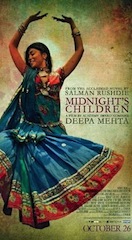
| |
Director: Deepa Mehta, 2012
At the stroke of midnight on August 15, 1947, as India gains independence, two newborns are switched by a nurse in a Bombay hospital. Saleem, the illegitimate son of a poor woman, and Shiva, the offspring of a wealthy couple, are fated to live the destinies meant for each other. Their lives become mysteriously intertwined and inextricably linked to the tumultuous events of India's post-independence history. Adapted and narrated by Salman Rushdie based on his acclaimed 1981 epic novel.
© Number 9 Films
|
|
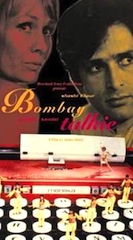
| |
Director: James Ivory, 1970
Lucia Lane, an English writer by way of the US, arrives in
Bombay (Mumbai) to watch the filming of one of her novels. She is
nearing middle age, has had several husbands, and is lonely
and self-absorbed. Hari, a screenwriter, offers to show her
around. This film gives an interesting glimpse into the prolific
Indian film industry.
© Merchant Ivory Productions
|
|

| |
Director: James Ivory, 1982
Anne, an Englishwoman, is investigating the life of her great-aunt Olivia whose
destiny had always been shrouded with scandal. The search leads back to the early
1920s, when Olivia, recently married, came to live with her civil servant husband
in an Indian princely state. Slowly, Anne discovers, upon getting pregnant by an
Indian local in the early 1980s, that she and Olivia have more than a little in
common. Based on the 1975 novel by Ruth Prawar Jhabvala.
© Home Vision Entertainment
|
|
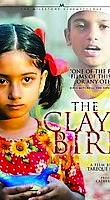
| |
Director: Tareque Masud, 2002
Set in East Pakistan (now Bangladesh) in 1971, a family is divided by religious belief
and civil war. Anu, a shy young village boy, is sent away to a madrassa by his father
Kazi, an orthodox Muslim. Far from his family, Anu struggles to adapt to the Islamic
school's harsh regimen. As political divisions in the country intensify, a split develops
between moderates and extremists in the madrassa. Meanwhile in Anu's village,
these same tensions create a growing rift between his father and mother.
© New Yorker Films
|
|
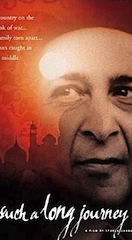
| |
Director: Sturla Gunnarsson, 1998
This film is set in Bombay (Mumbai) on the eve of the 1971 war with Pakistan and the creation
of Bangladesh. A bank clerk and his family find their modest life
unraveling when he agrees to do a clandestine favor for an old friend.
Based on the prize-winning novel by Robinton Mistry the film is both
a tragic drama and a wryly humorous story about enduring hope and the
strength of faith.
© Image Entertainment
|
|
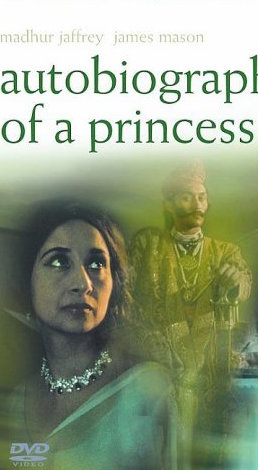
| |
Director: James Ivory, 1975
On the anniversary of her father's death, an exiled Indian princess (Madhur Jaffrey) celebrates his memory in her London flat by serving tea and showing a selection of 16mm home movies to her guest, her father's secretary, Cyril Sahib (James Mason). A wistful look back at the princely states of British India featuring rare archival film footage from the erstwhile states of Jaipur, Jodhpur and Bikaner.
© Criterion
|
|
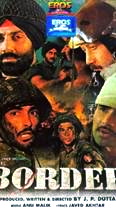
| |
Director: J.P. Dutta, 1997
During the 1971 Indo-Pakistani War an Indian army unit numbering just 150 men is facing
a Pakistani force of over 2000 soldiers and tanks in the remote Longewala region of Punjab.
The story focuses on a small group of soldiers and how they supported each other through
the pivotal "Battle of Longewala." Based on a true story, this film is a landmark of
Bollywood cinema and manages to combine bloody battle scenes with lengthy and lavish
musical numbers.
© Eros International
|
|
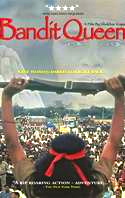
| |
Director: Shehkar Kapur, 1995
This film tells the story of Phoolan Devi, a low-caste village girl
whose life erupts in a feverish spree of vengeful violence, shocking
the world and bringing a government to its knees. Born of low caste,
eleven-year-old Phoolan is sold into marriage with a man twenty years her
senior in exchange for a cow and a rusted bicycle. Challenging her
fate, she escapes and falls in with a pack of ruthless bandits,
But the political structure of the male-dominated gang comes with
its own set of brutal humiliations. © Hallmark Home Entertainment
|
|
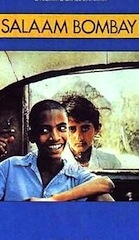
| |
Director: Mira Nair, 1988
This film focuses on the lives of India's urban street children. The story
is seen through the eyes of Krishna, an illiterate rural boy abandoned
by his family and left to fend for himself on the streets of Bombay (Mumbai).
The film is a gritty and disturbing look at the pimps, prostitutes, pushers,
addicts, hustlers, and the legions of street children struggling to survive
on the streets of modern India.
© MGM/UA
|
|
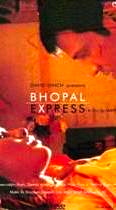
| |
Director: Mahesh Mathai, 2001
In December 1984 a poison gas leak at the Union Carbide chemical plant in
the city of Bhopal resulted in one of the worst industrial accidents in history.
Thousands died and tens of thousands more were permanently sickened. This film traces
the events of the disaster through the eyes of Verma, a plant supervisor, and his
new bride, Tara.
© Alive Entertainment
|
|
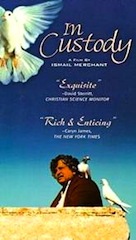
| |
Director: Ismail Merchant, 1993
This film revolves around the attempts of a teacher to interview
the legendary Urdu poet, Nur. In a larger sense it is about the decline of a language and its effect on a people,
specifically, Urdu and the Muslims of India. While the story has many comical
elements, an all pervasive sense of loss and decline
permeates every scene of the movie as an idealistic teacher
searches for a lost literary treasure.
© Columbia/TriStar
|
|
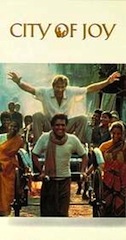
| |
Director: Roland Joffé, 1992
Set in the slums of Calcutta, this film tells the story of a disillusioned
young American doctor who travels to India to escape his former life and becomes part of a
mission serving lepers and slum dwellers. Om Puri gives an excellent performance as
Hasari Pal, a rickshaw puller struggling to provide for his family. The film is
based loosely on the bestselling 1985 novel by French journalist Dominique LaPierre.
© Columbia/TriStar
|
|
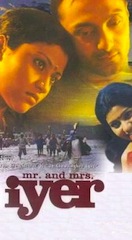
| |
Director: Aparna Sen, 2002
Meenakshi Iyer (a Tamil Brahman) and her nine-month-old son are riding next to
Raja (a Muslim) on a long bus journey. When the bus is stopped by a communal mob on
the hunt for Muslims, Meenakshi thrusts her baby into Raja's arms and the mob allows
the couple to proceed unharmed. This film traces the growing relationship between
"Mr. & Mrs Iyer" while set against the background of Hindu-Muslim communal violence.
© Triplecom Media Pvt. Ltd.
|
|
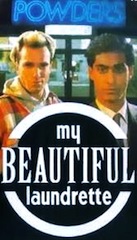
| |
Director: Stephen Frears, 1985
This film is set within the South Asian community in London during
the 1980s. The main character, Omar, gains the running of his Uncle
Nasser's laundromat. He is helped by his friend Johnny, who is white
and an outsider, but not entirely accepted by either the white or
Asian Londoners. A revealing perspective on multi-cultural London
and the "Empire" coming home to Britain.
© Warner Home Video
|
|
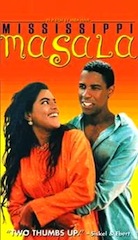
| |
Director: Mira Nair, 1992
In 1972 all South Asians in Uganda were expelled by the dictator Idi Amin and their property confiscated.
This film tells the story of one family that resettled in the American South
to manage a motel. The plot revolves around the romance between the daughter
Mina and an African-American carpet cleaner and the cultural clash between the
two families. It also focuses on the father and his coming to terms with
his dislocation and exile life.
© Columbia/TriStar
|
|
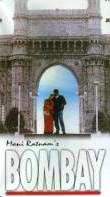
| |
Director: Mani Ratnam, 1995
A young Hindu man and Muslim girl fall in love and elope after their families forbid
them to marry. They move away from their small village to Bombay (Mumbai) where they live
happily until tragedy strikes with the outbreak of the widespread communal riots in that
city in the wake of the destruction of the Babri Masjid in Ayodhya in 1992.
© Eros Entertainment
|
|
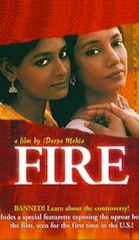
| |
Director: Deepa Mehta, 1997
Sita, a young woman in Delhi, embarks on an arranged,
loveless marriage to a faithless husband. The extended family
live together according to custom and tensions escalate. Radha,
Sita's sister-in-law, is unable to conceive and her disappointed husband
has taken a vow of celibacy and is often gone. Eventually Sita and
Radha develop a physical relationship which is far more emotionally sustaining
than that which they have found with their husbands. This taboo-breaking film
led to riots in Mumbai. © New Yorker Films
|
|

| |
Director: Udayan Prasad, 1997
Parvez is a westernized Pakstani taxi driver living in the English
Midlands town of Bradford. He watches helplessly as his British-born son, Farid,
embraces Islamic fundamentalism in response to the bigotry and perceived
moral degeneracy of working class life in England. The film has its comic
moments but is mostly a drama dealing with cross-cultural and generational
gaps among the South Asian community in Britain.
© Miramax
|
|
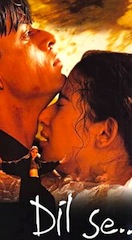
| |
Director: Mani Ratnam, 1998
Amarkant Varma is a program executive for All India Radio and is dispatched around the
country to interview citizens to mark the fiftieth anniversary of Indian independence.
While waiting for a train he meets and falls in love with a mysterious woman named Meghna.
Amarkant pursues her not knowing she is a member of a separatist group and has been chosen
to carry out a suicide bombing at the Republic Day parade.
© Eros Entertainment
|
|

| |
Director: Damien O'Donell, 1999
This film is set in Salford, Britain, in 1971. Fish-and-chip shop owner George Khan expects
his family to follow his strict Pakistani Muslim ways. But his
children, with an English mother and having been born and
brought up in Britain, increasingly see themselves as British
and start to reject their father's rules on dress, food,
religion, and living in general.
© Miramax
|
|
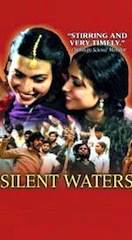
| |
Director: Sabiha Sumar, 2003
This Pakistani film is set in 1979 when General Zia ul-Haq had placed the
country under martial law and was beginning to allow the legal and educational
systems to come under the control of Islamic clerics. The film is set in a
village in Punjab in which Ayesha, a middle-aged widow still haunted by the
ghosts of Partition, soon watches her teenage son succumb to the forces of
radical Islam.
© First Run Features
|
|
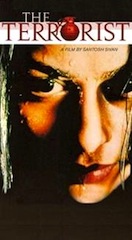
| |
Director: Santosh Sivan, 1999
Inspired by the events surrounding the 1991 assassination of Indian Prime
Minister Rajiv Gandhi by Tamil separatists, this film focuses on the making of
a young suicide bomber. Malli has spent most of her nineteen
years in revolutionary training. She is a hardened killer but the path to assassination
forces to her to examine her own emotions and beliefs for the first time (in
Tamil with English subtitles).
© Winstar Video
|
|

| |
Director: Gurinder Chadha, 2002
Jess is a girl from a conservative Sikh family
living in Hounslow, West London. Her only desire is to become a famous
football star like her idol, David Beckham, but her traditional family
refuses even to consider it. A light-hearted look at the tensions of
family politics and growing up in the midst of two cultures.
© Twentieth Century Fox
|
|
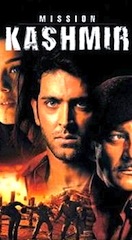
| |
Director: Vidhu Vinod Chopra, 2000
Set in the turmoil of the disputed Kashmir Valley between 1989 and 1999, the
mission actually starts after a series of life-altering events. An Indian Muslim
police officer in the line of duty accidentally kills a Muslim Kashmiri family.
The sole surviving child of the clan is then adopted by the police officer at his
wife's insistence since the couple had earlier lost their own son in an accident.
A typical Bollywood action film in many ways, but unusual for tackling the politically
sensitive issue of Kashmir. © Columbia/TriStar
|
|
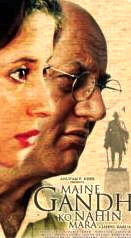
| |
Director: Janhu Barua, 2005
The multi-layered plot of this film focuses on a semi-senile widower named Uttam who is
forced into retirement from his position as a distinguished lecturer in Hindi literature.
As his dementia worsens he begins to blame himself for the assassination of Gandhi over
half a century earlier. Finally his daughter begins to investigate her father's past and
his connection to the Mahatma to discover what has triggered these long-suppressed
memories.
© Yash Raj Films
|
|
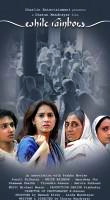
| |
Director: Dharan Mandrayar, 2005
This film tells the story of four remarkable women and their journey to overcome the
social stigma and grim reality of widowhood in India. Abandoned by their families,
impoverished by a system that fails to recognize them, and denied even the simplest grace
of wearing color, they find the resolve to transform their lives.
© Prahbu Films
|
|
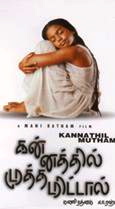
| |
Director: Mani Ratnam, 2002
Dhileepan and Shyama are a newly married Tamil couple forced to flee their home in Sri
Lanka. They soon become separated and, while in a refugee center in the Indian state of
Tamil Nadu, Shyama gives birth to a daughter, Amudha, but abandons her before returning home.
When Amudha is nine years old she travels to Sri Lanka with her adoptive parents to find
her birth mother. A moving and intimate portrayal of the human cost of the Sri Lankan civil
war (in Tamil and Sinhala).
© Film Movement
|
|
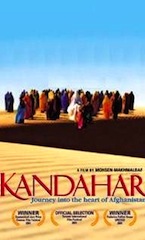
| |
Director: Mohsen Makhmalbaf, 2001
The prolific Iranian director Mohsen Makhmalbaf has had
one of his most visible international successes with this
haunting, open-ended drama. Set (and shot) during the Taliban
era, shortly before the US invasion of 2001, this film follows an
Afghani-Canadian woman as she attempts to enter Afghanistan in
search of a despondent sister. (Also titled Safar e Ghandehar).
© New Yorker Films
|
|
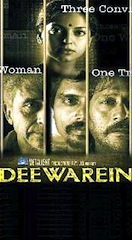
| |
Director: Magesh Kukunoor, 2003
This film is revolves around the lives of three death row inmates in an Indian
prison—all convicted of murder. The warden, Mohan, desiring his prison to be an
instrument of holistic reform and not merely about punishment and isolation, allows
Chandrika, a documentary filmmaker, to come into the prison to film the three
convicts. As the documentary progresses, a bond develops between Chandrika
and the men. A gripping psychological thriller with a surprise ending. © Metalight Productions
|
|
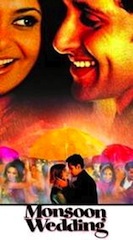
| |
Director: Mira Nair, 2002
This film tells the story of a wedding in upper middle-class Delhi. An
extended family spread all over the world reunites for the big event
and all the ties and feelings between siblings, cousins, parents,
friends are shown and expressed in a light but touching way; love,
friendship, envy, pain, sorrow, loneliness, passion, and hope in
a nearly perfect mix. This film is an accurate portrait of the middle
class and their servants in present-day India.
© Universal
|
|
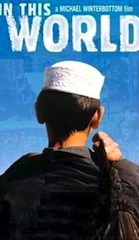
| |
Director: Michael Winterbottom, 2002
This extraordinary docudrama recreates the harrowing journey of two young Afghan
males, Jamal and Enayat, who are smuggled, step-by-step, from their refugee camp
in Peshawar, Pakistan through Iran, Turkey, and Europe to their final destination
in London. The film draws attention to the desperate plight of refugees and illegal
immigrants in general, but especially of Afghans displaced in Pakistan after a
generation of violence.
© Sundance Films
|
|
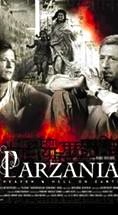
| |
Director: Rahul Dholakia, 2005
This powerful film is based on the true story of a Parsi family whose ten-year-old
son, Parzan, disappeared after an angry mob attacked their home during the 2002 riots
in Godhra in the Indian state of Gujarat. The Godhra riots, in which over 1000 people
were killed (mostly Muslims), were among the worst acts of communal violence in India's
recent history. The film has been screened throughout India, except in Gujarat.
© Serene Pictures Classics
|
|
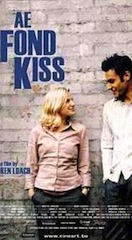
| |
Director: Ken Loach, 2004
Set in Glasgow, this film tells the story of a cross-cultural relationship
between Qasim, an aspiring DJ of Pakistani descent, and Roisín, an Irish
Catholic piano instructor. Pressured by his parents to accept an arranged
marriage with his cousin Yasmin, Qasim must choose between his love for Roisín
and his duty to comply with the traditional values of his family and Muslim
community.
© Lions Gate
|
|
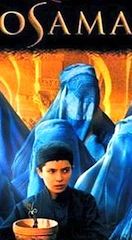
| |
Director: Siddiq Barmak, 2003
The first movie produced by Afghan filmmakers after the fall of the Taliban, Osama
is a searing portrait of life under the oppressive fundamentalist regime. Because women are
not allowed to work, a widow disguises her young daughter as a boy ("Osama") and sends her out
to work so that they will not starve to death.
© MGM/UA
|
|
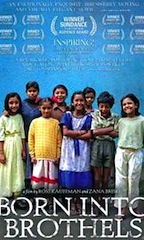
| |
Directors: Zana Briski and Ross Kauffman, 2004
Two documentary filmmakers chronicle their time in Sonagchi, Calcutta, and the
relationships that develop between them and the children of prostitutes who work
the city's notorious red light district. The children are given cameras and encouraged
to document the details of the squalor and vibrant humanity of their lives in the
slums.
© HBO/Cinemax Documentary Films
|
|
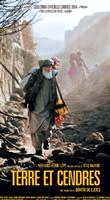
| |
Director: Atiq Rahimi, 2004
Set in post-Taliban Afghanistan, this film by an Afghan director tells the story of Dastaguir
and his recently deafened five-year-old grandson Yassin. The pair hitchhike and walk across
the barren landscape as they make their way to the coal mine where Dastaguir's son Murad works.
There Dastaguir must tell Murad that the rest of their family were all killed in a recent bomb attack.
A sad portrayal of the violence and uncertainty that has persisted in the wake of
the overthrow of the Taliban. © Bodega Films
|
|
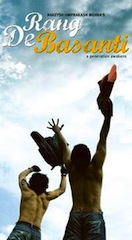
| |
Director: Rakesh Mehra, 2006
A young, idealistic English filmmaker, Sue, arrives in India to film a docudrama
about Indian revolutionaries Bhagat Singh, Chandrashekhar Azad, and their
contemporaries during the fight for freedom from British colonial rule. However, the
young Indians she casts in the film reflect a self-centered and materialistic
generation that, at first, cannot relate to the patriotism and sacrifice of
the characters they portray.
© UTV Motion Pictures
|
|
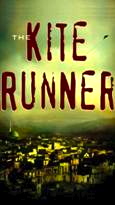
| |
Director: Marc Foster, 2007
Amir, the privileged son of a wealthy businessman in Kabul is friends with Hassan, the
son of his father's servant. As children in the relatively stable Afghanistan of the
early 1970s, the boys are inseparable and spend idyllic days flying kites and telling
stories. Years after Amir and his father have fled to America and settled there, Amir returns
to his war-torn native land, now under Taliban rule, to learn about the fate of Hassan.
Based on the bestselling 2003 novel by Khaled Hosseini.
© Dreamworks
|
|
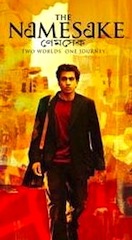
| |
Director: Mira Nair, 2006
Set in Calcutta and New York, this film spans two generations and two cultures.
Shortly after their arranged marriage—and still virtual strangers to each other—Ashoke
and Ashima move from India to the US. When their son is born they raise him in a
traditional Bengali home, but as he grows older his desire to embrace his identity
as an American brings him into conflict with his parents' values and expectations.
Based on the 2003 novel by Jhumpa Lahiri.
© Fox Searchlight
|
|
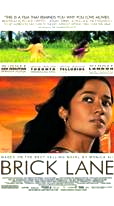
| |
Director: Sarah Gavron, 2007
A young Bangladeshi woman, Nazneen, arrives in 1980s London, leaving behind her beloved sister
and home, for an arranged marriage and a new life. Trapped within the four walls of her flat
in East London, and in a loveless marriage with a middle-aged businessman, she fears her soul
is quietly dying. Yet the free-thinking society that surrounds her eventually penetrates
the traditions she holds dear, and slowly Nazneen awakens to her own ideas and her own
choices. Based on the 2003 novel by Monica Ali.
© Film4
|
|
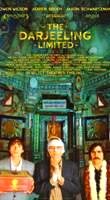
| |
Director: Wes Anderson, 2007
A quirky story about three formerly estranged American brothers who set off on a
rail journey across India to "find themselves" and reestablish their bonds with
each other. Their spiritual quest, however, veers rapidly off course as they
become stranded in the middle of the Rajasthan desert. At this moment,
a new and unplanned journey suddenly begins. A strange but intriguing take on the
stereotype of western travelers who view India as a destination for spiritual
enlightenment.
© Fox Searchlight
|
|

| |
Director: Danny Boyle, 2008
Jamal Malik, an 18 year-old orphan from the slums of Mumbai, is just one
question away from winning a staggering twenty million rupees
on India's version of the television program "Who wants to be a Millionaire?"
When the police arrest him on suspicion of cheating, Jamal relates the
story of life and survival in the slum where he and his brother grew up. Despite
its popular reception and critical acclaim in the West (it won the Academy Award for Best Picture), this film prompted
protests from Mumbai slumdwellers and activists upon its release in India.
© Fox Searchlight
|
|
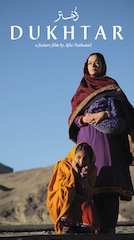
| |
Director: Afia Nathaniel, 2014
In the mountains of Northwest Pakistan, Allah Rakhi flees her village to prevent the forced marriage of her ten-year-old daughter, Zainab, to Tor Gul, the elderly headman of a rival family. With Gul's henchmen in close pursuit, Allah Rakhi and Zainab are smuggled by a sympathetic truck driver from their mountain home to the teeming streets of Lahore. A harrowing story with spectacular cinematography in the mountains and valleys of the Gilgit-Baltistan region of Pakistan.
© Zambeel Films
|
|
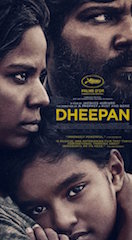
| |
Director: Jacques Audiard, 2015
The heartbreaking story of Dheepan, a Tamil fighter who flees civil war-ravaged Sri Lanka
after having lost his entire family. He joins with two other Tamil refugees, who pretend
to be his wife and daughter, and together they try to make better lives for themselves as
immigrants in a suburban Paris housing project. In the process, Dheepan is forced to reconnect
with his warrior's instincts to protect his new family. This film won the Palme d'Or at
the 2015 Cannes Film Festival.
© Criterion
|
|
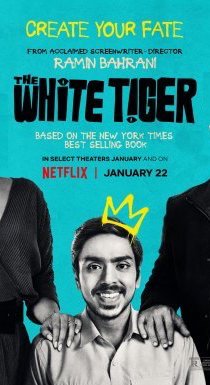
| |
Director: Ramin Bahrani, 2021
This extraordinary film follows the journey of Balram, a low caste boy from a
village in North India who hustles his way into service as the chauffer of a local
landlord and eventually into becoming a successful entrepreneur in Bangalore. A powerful
and thought-provoking view of caste, loyalty, corruption, poverty, and opportunity in
21st-century India. Based on the Man Booker Prize-winning 2008 novel by Aravind Adiga.
© Netflix
|
|
